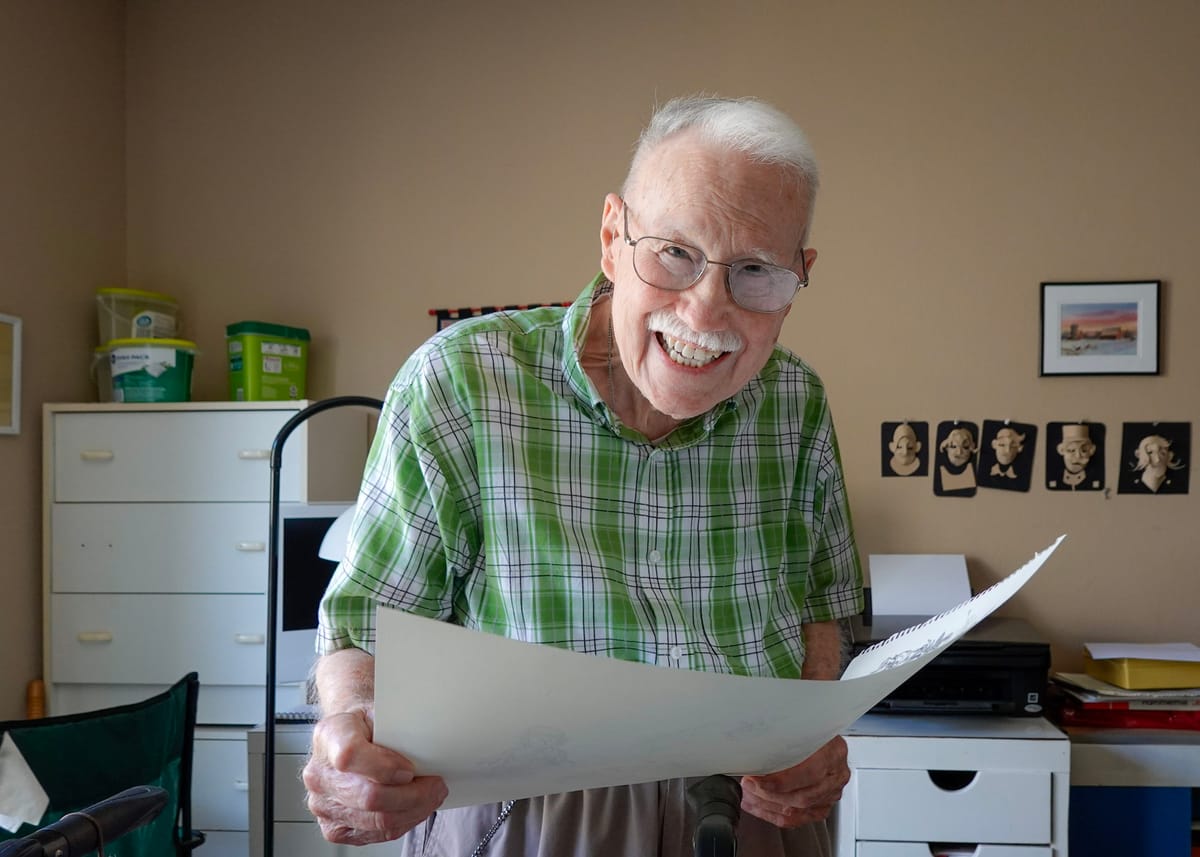Bodies at rest: '[Re]pose' at the Ulrich Museum of Art
An exhibition in the museum's Beren Gallery examines the reclining body over two centuries of art history. It's on view through December 7.
![Bodies at rest: '[Re]pose' at the Ulrich Museum of Art](/content/images/size/w1200/2024/10/Cruz-1.jpg)
The exhibition "[Re]pose: Leisure Bodies and Empowered Postures" invites viewers to contemplate dynamics of power and empowerment through representations of the reclining figure in art across the 20th and 21st centuries.
Viewing this show is a multi-layered experience. We encounter works that represent the (typically female) reclining nude body, situated in context of the male gaze. We also take in artwork that responds to well-known historical representations of the reclining nude body and male gaze. And we reflect on our own associations with this spectrum of work.
The intimacy of the Beren Gallery and curator Jo Reinert’s selections from the Ulrich Museum’s permanent collection, as well as pieces on loan, combine to create a thought-provoking experience. We are compelled to compare and contrast works by virtue of their proximity.
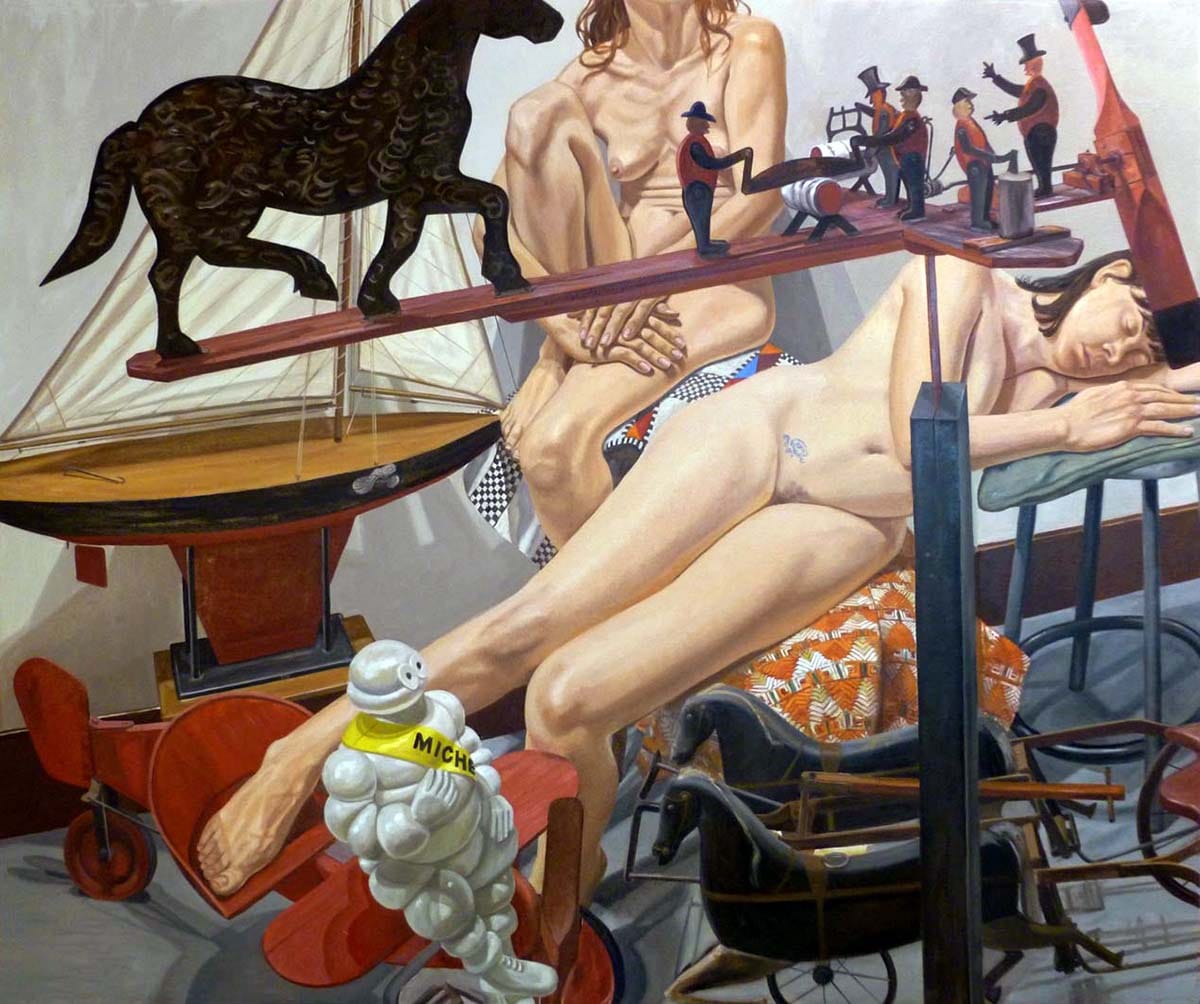
For example, in the Philip Pearlstein 2010 painting "Two Models with Kiddie Car Airplane, Chariot, Whirlygig and Michelin Man," the female nude models awkwardly exist in a space devoted to play objects. Pearlstein’s composition crops and anonymizes the female figures. In the 1983 photograph "Self-portrait in my room, NYC," Nan Goldin’s bedroom is filled with interesting personal objects, but Goldin’s raw, confident presence as she rests on her bed is in direct contrast to Pearlstein’s detached rendering of female nude subjects.
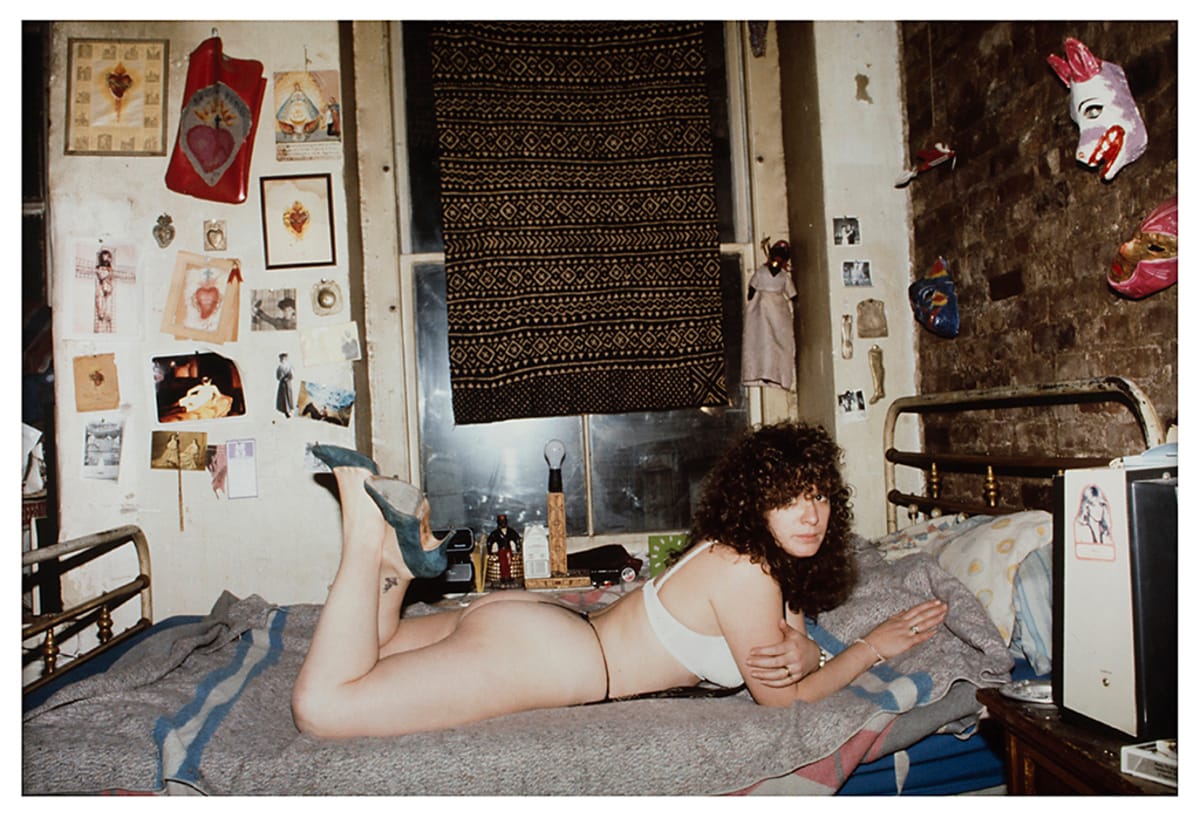
The exhibition also includes the multimedia artist Faith Ringgold, who is perhaps best known for her “story quilts” that illustrate narratives from the Black community and often center women in these narratives. In "Jo Baker’s Birthday" from 1995, she chooses for her subject American-born French dancer, singer, and actress Josephine Baker, whom she places in a Henri Matisse-inspired tableau. (The image is a screen print of a Ringgold quilt in the collection of the St. Louis Museum of Art.)
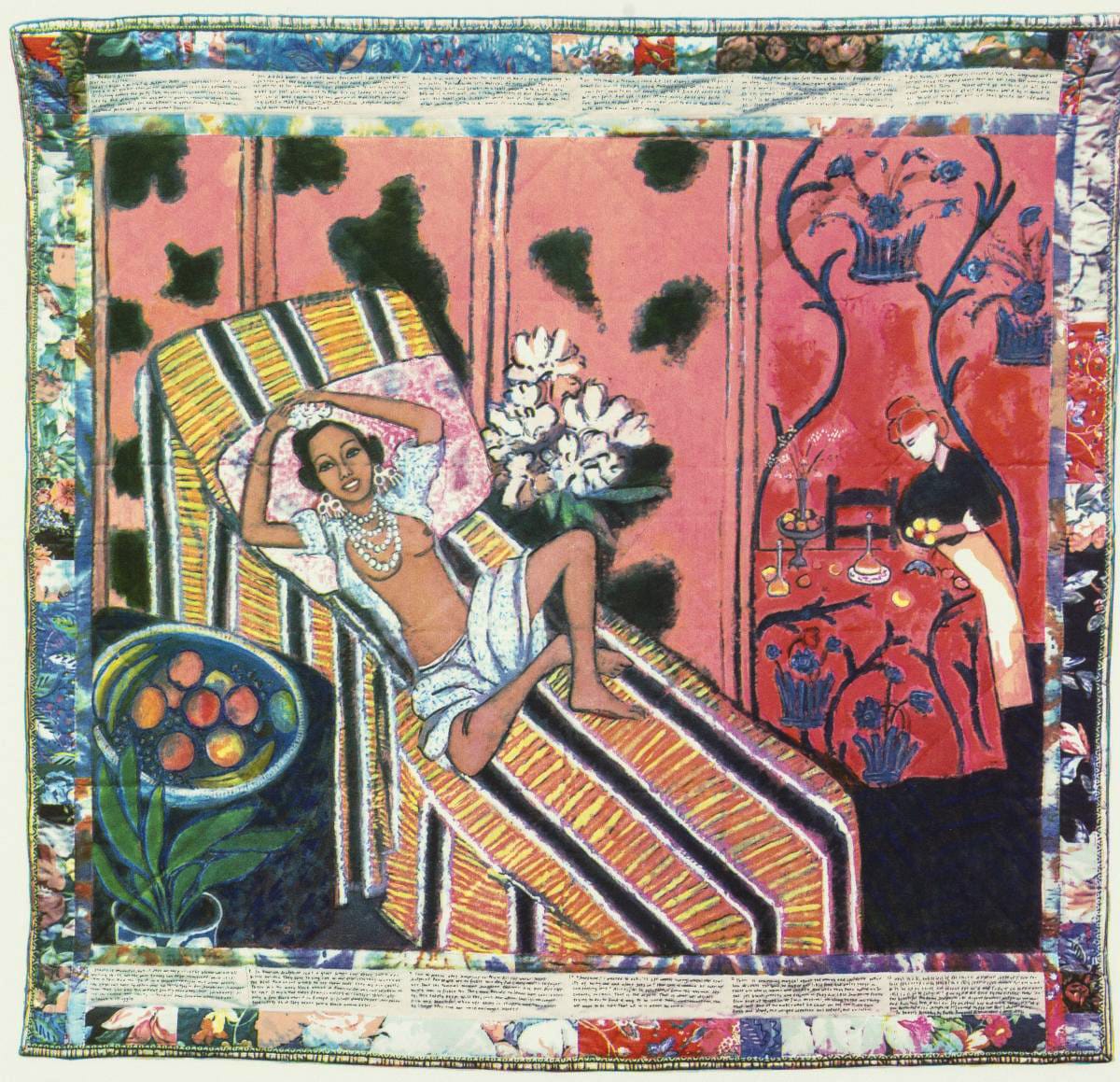
Ringgold relegates a segment of Matisse’s "Dessert: Harmony in Red (The Red Room)" from 1908 to the background, while featuring a reclining Baker in the foreground in a composition and pose that recall Matisse’s 1923 work "Odalisque with Magnolias." We cannot glean from pose and expression if the white, female subject from the "Harmony in Red" section of the print is experiencing any joy in her work. Whereas the figure of Josephine Baker inhabiting the Matisse "Odalisque with Magnolias" section of the print is shown hands over head, legs crossed, smiling, fully indulging in sensual birthday pleasure in bejeweled, semi-nude repose.
In "Saffronia," from 2017, artist Ayana V. Jackson stages a photographic self-portrait that recalls Manet’s 1863 portrait "Olympia." As the character of Saffronia, Jackson is the sole occupant of Olympia’s space. The artist subverts the viewer’s expectations of the Manet portrait that focuses on a white, female nude reclining figure, who faces the viewer without shame, but also without awareness of the Black maid (unnamed in the painting’s title) who attempts to present Olympia with a floral bouquet.
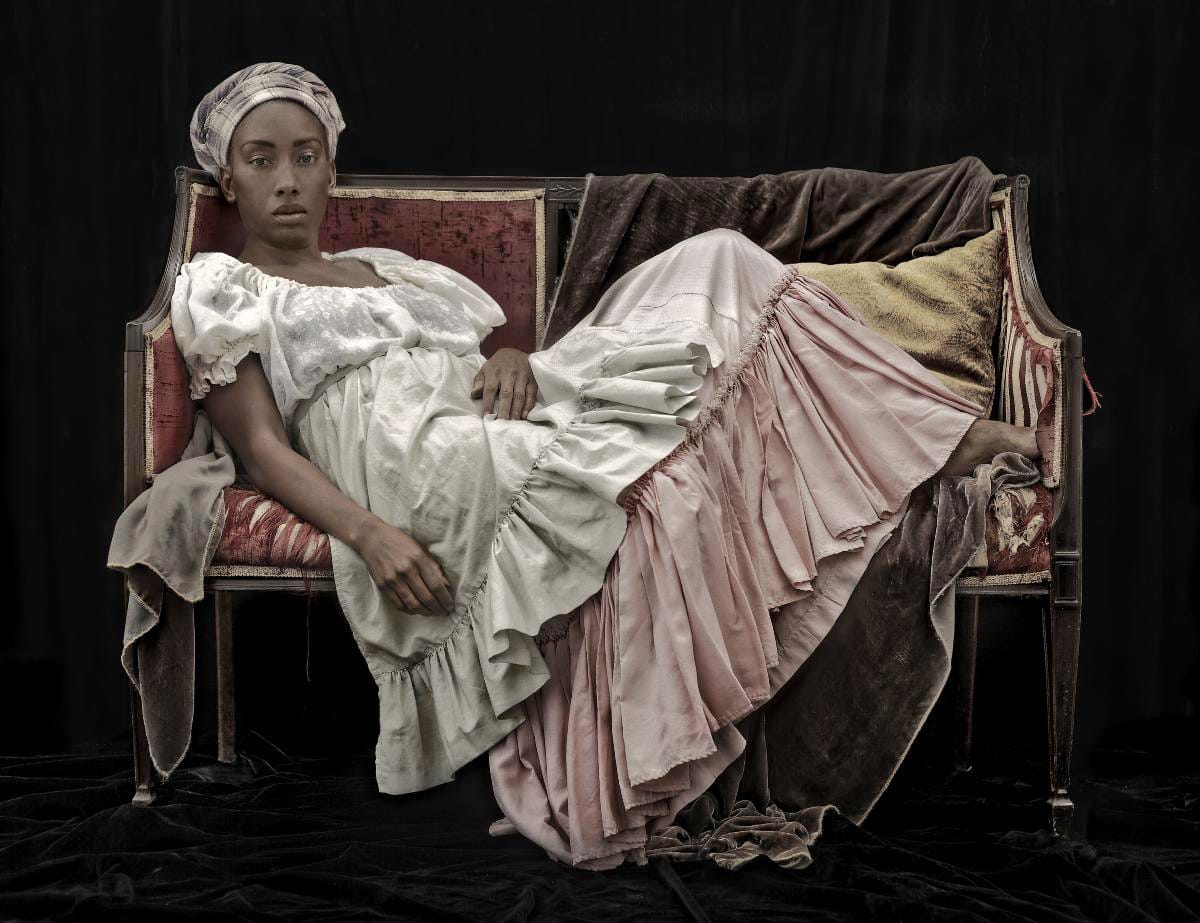
Saffronia regards the viewer directly, reminiscent of Olympia; however, Saffronia’s clothing and reclined position show her resting from work. One bare foot pushes into the arm of the threadbare sofa that is not long enough to allow her to recline more fully. Her expression is unapologetic. Jackson transforms an historical space of white male gaze into a space of empowered Black rest.
David Antonio Cruz celebrates a moment of playful sofa repose in his 2021 diptych "You’relookingyoungerthanever,but I’mNotaboutyourlips,they’requitestraight." Cruz depicts members of his chosen family (which he describes as “non biological family structures, ‘bonds between queer people, based in mutual support and love, to build hope and resilience.”)
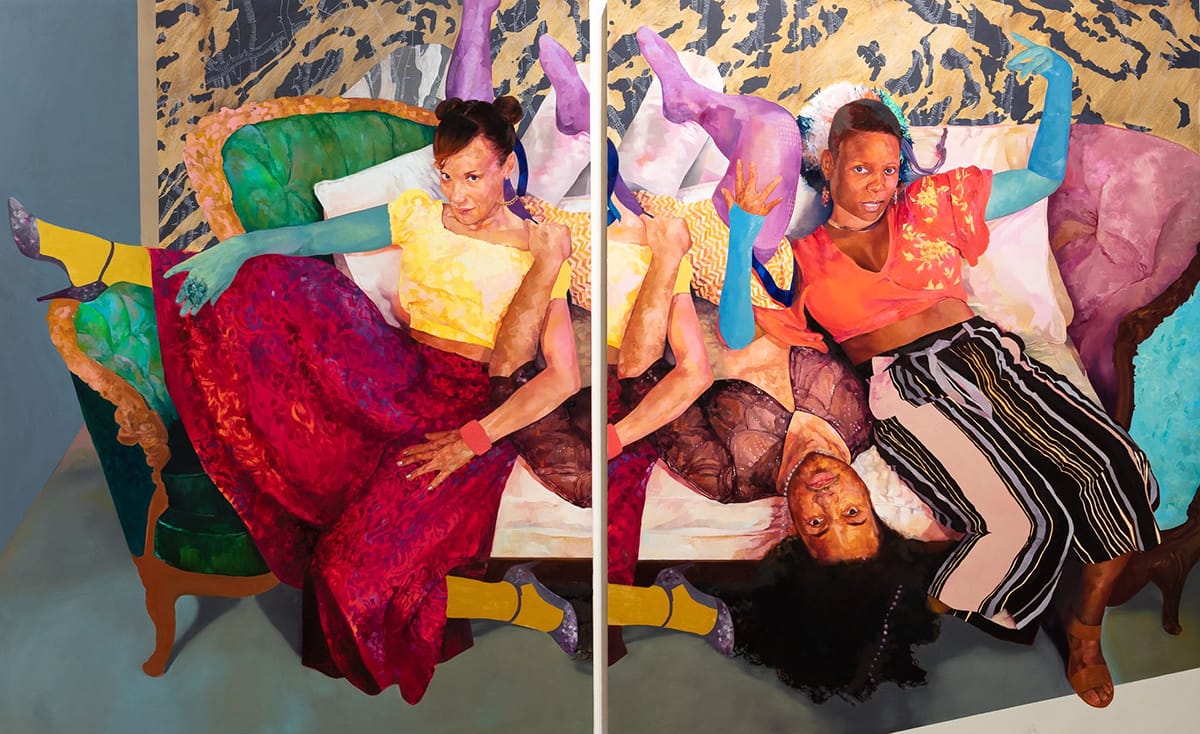
Cruz’s entire composition speaks to defying expectations. Initially, we notice the center subject poses upside down with their hair on the floor and legs in the air, contrary to our expectations of a portrait. We then realize that the subjects’ limbs, which are enmeshed in a colorful whirl, are repeated between left and right canvases. Furthermore, we notice that the Victorian sofas on which the subjects recline don’t match between left and right canvases. The pleasurable chaos of the dynamic composition and the subjects’ embrace reiterate the idea of shared joy and strength in chosen family connections.
With "[Re]pose: Leisure Bodies and Empowered Postures" on view through December 7, there is still plenty of time to visit once, if not more than once, for a profound contemplation of the expressions of power and empowerment in representations of the reclining body.
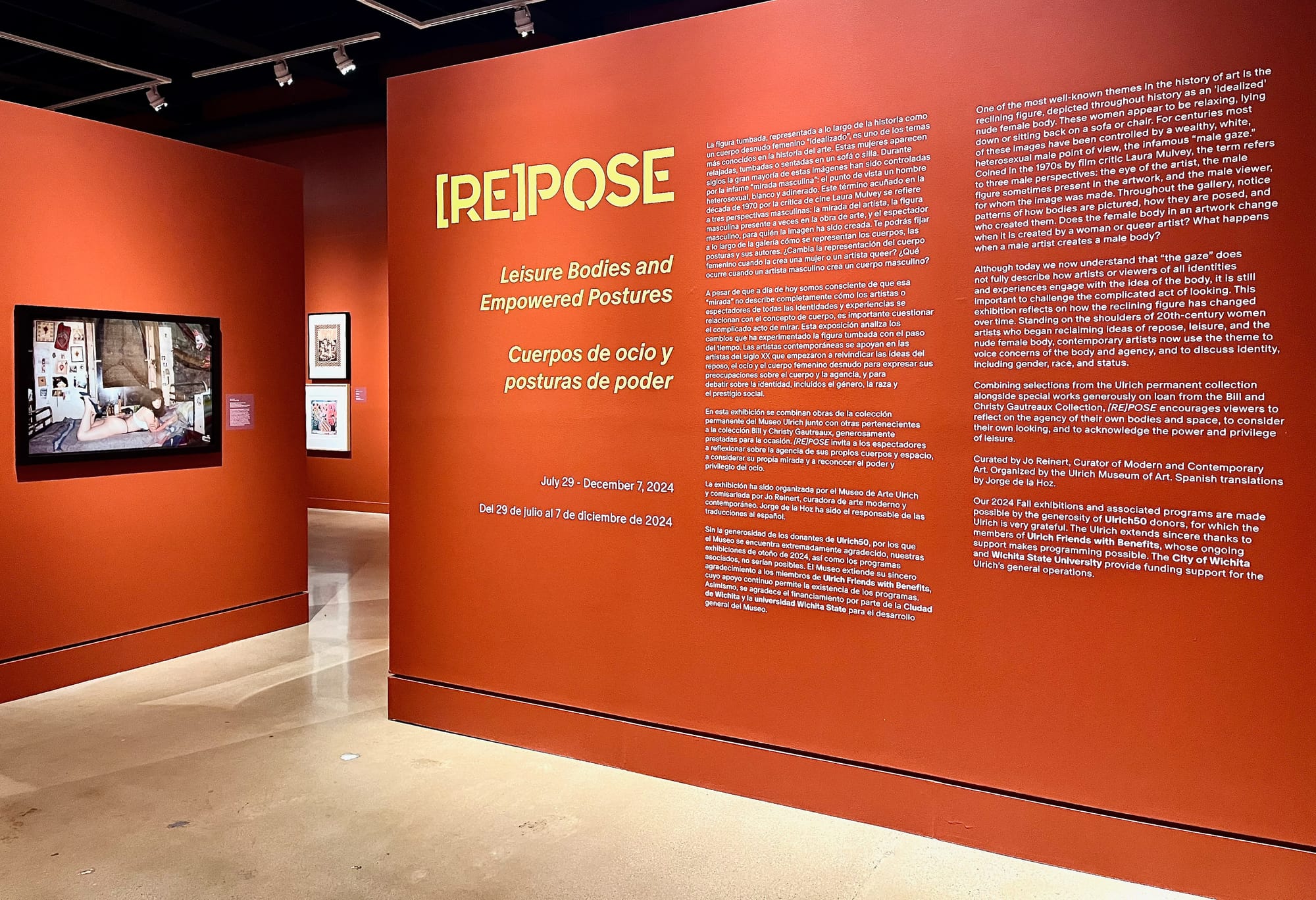
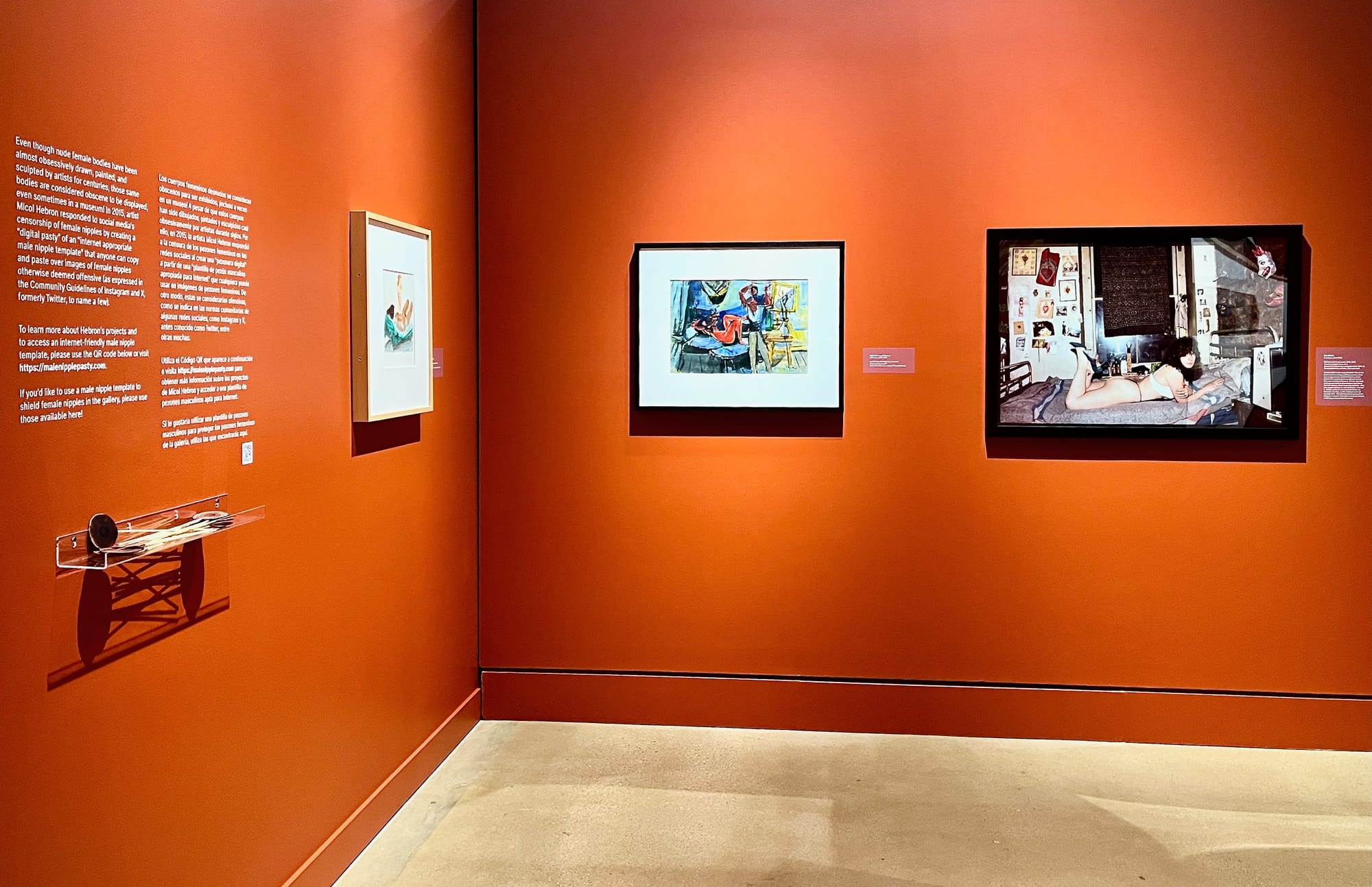
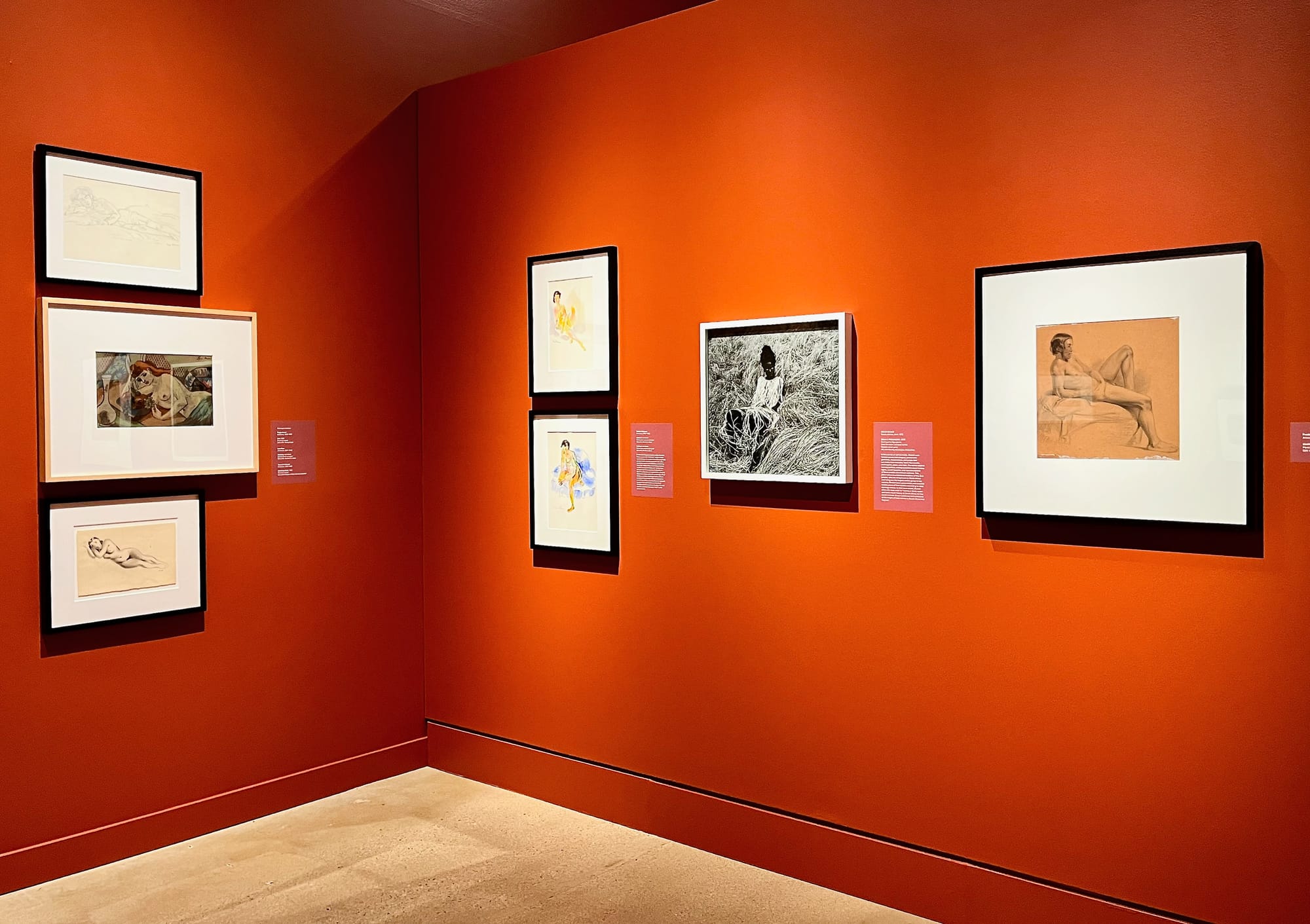
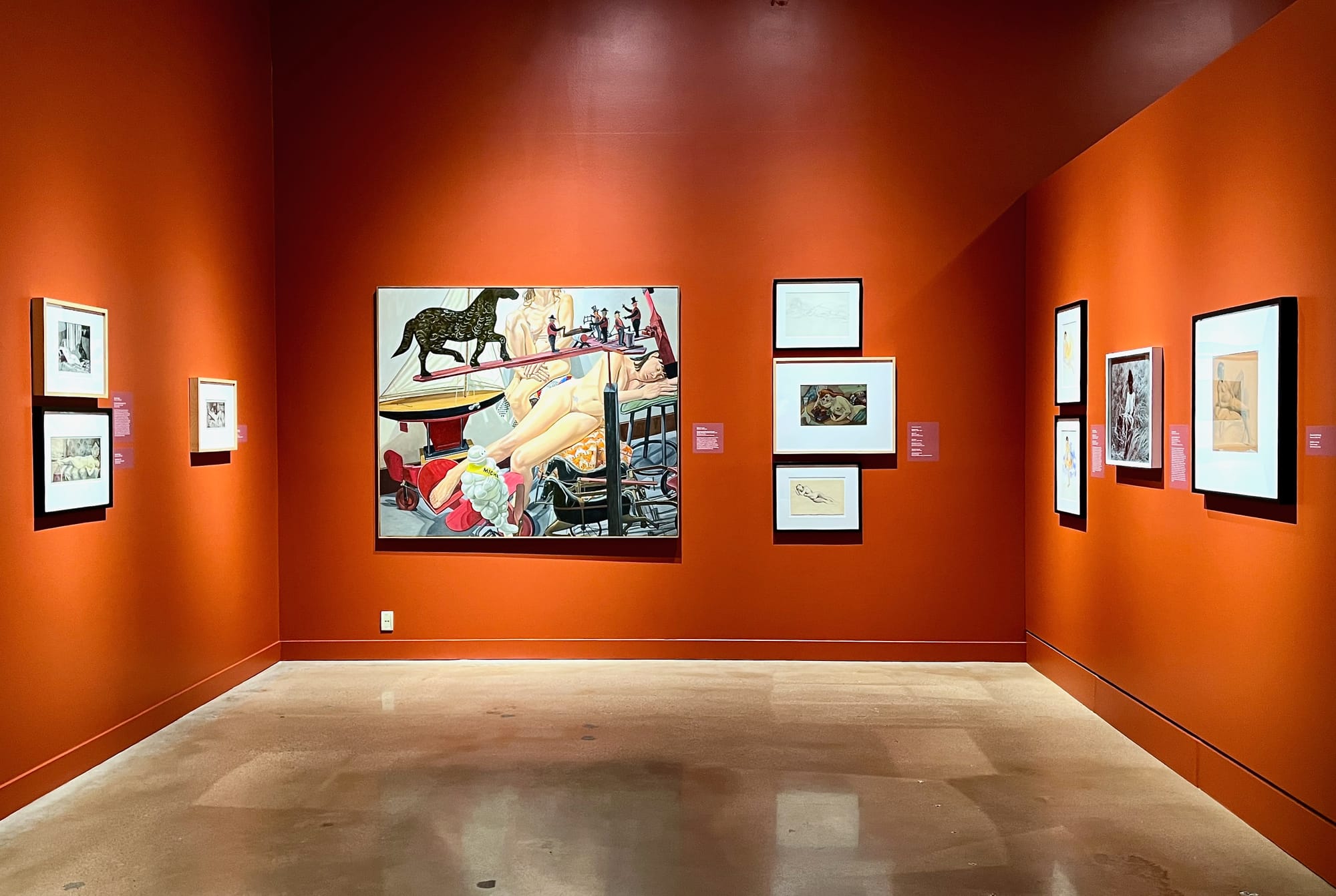
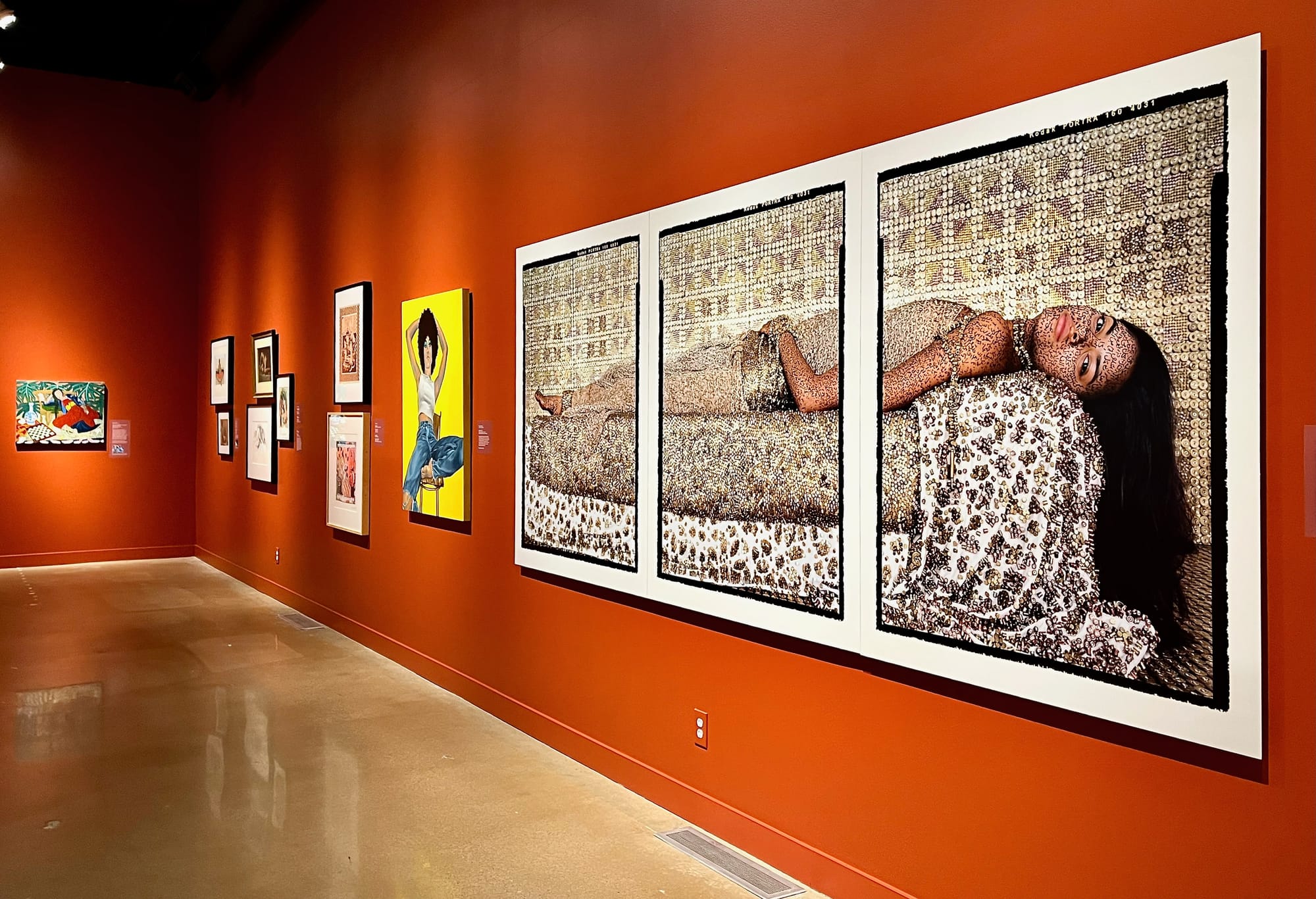
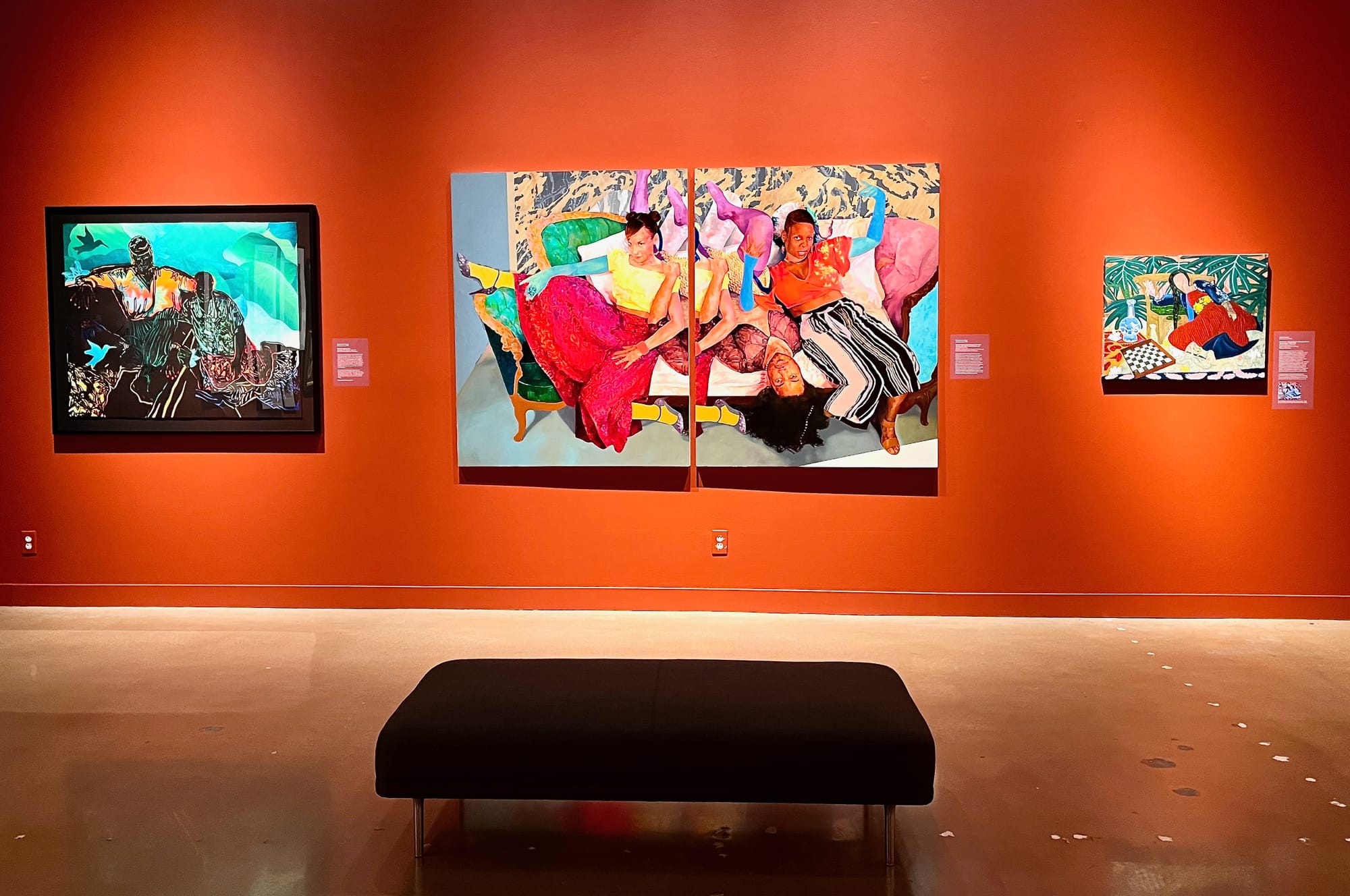
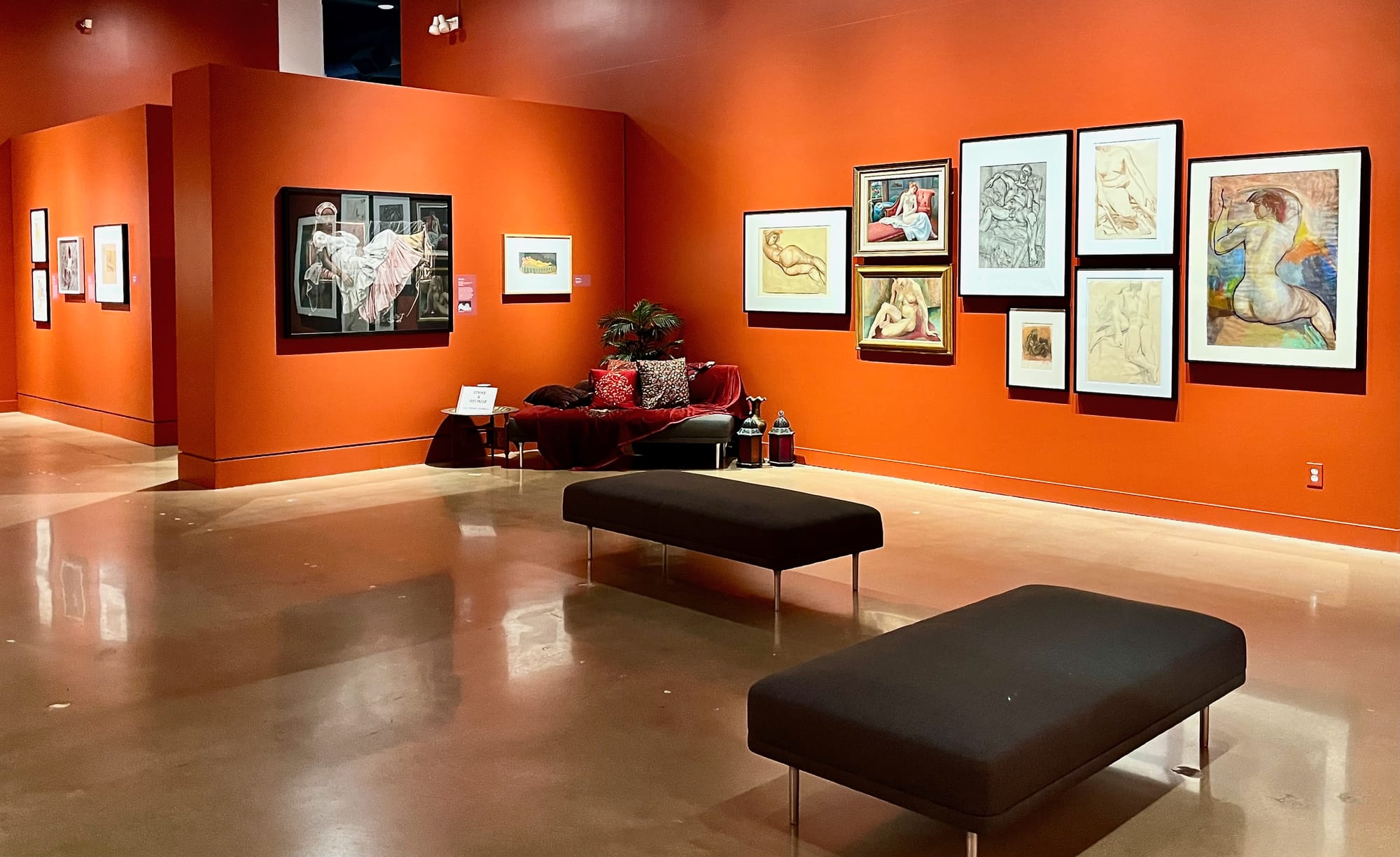
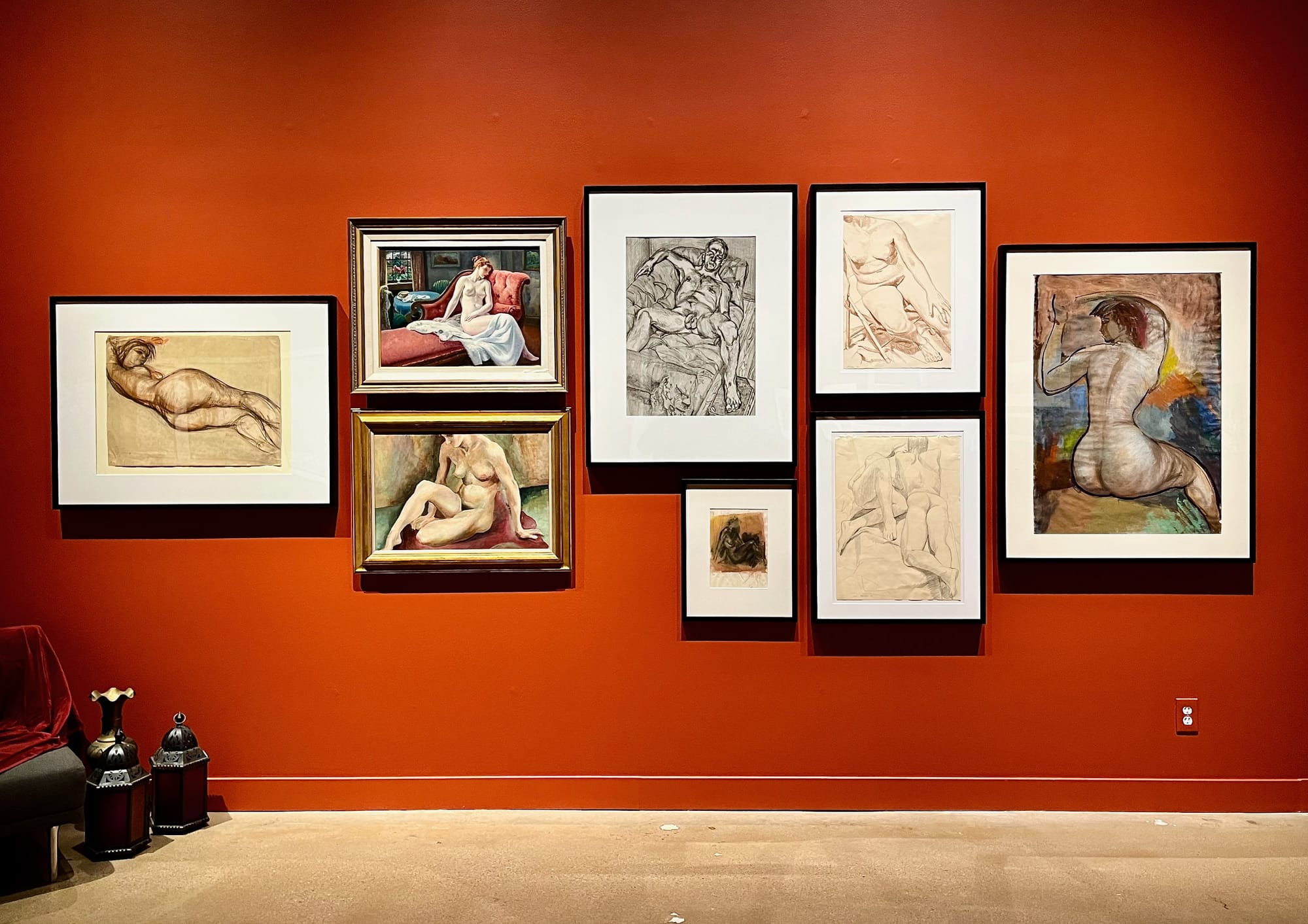
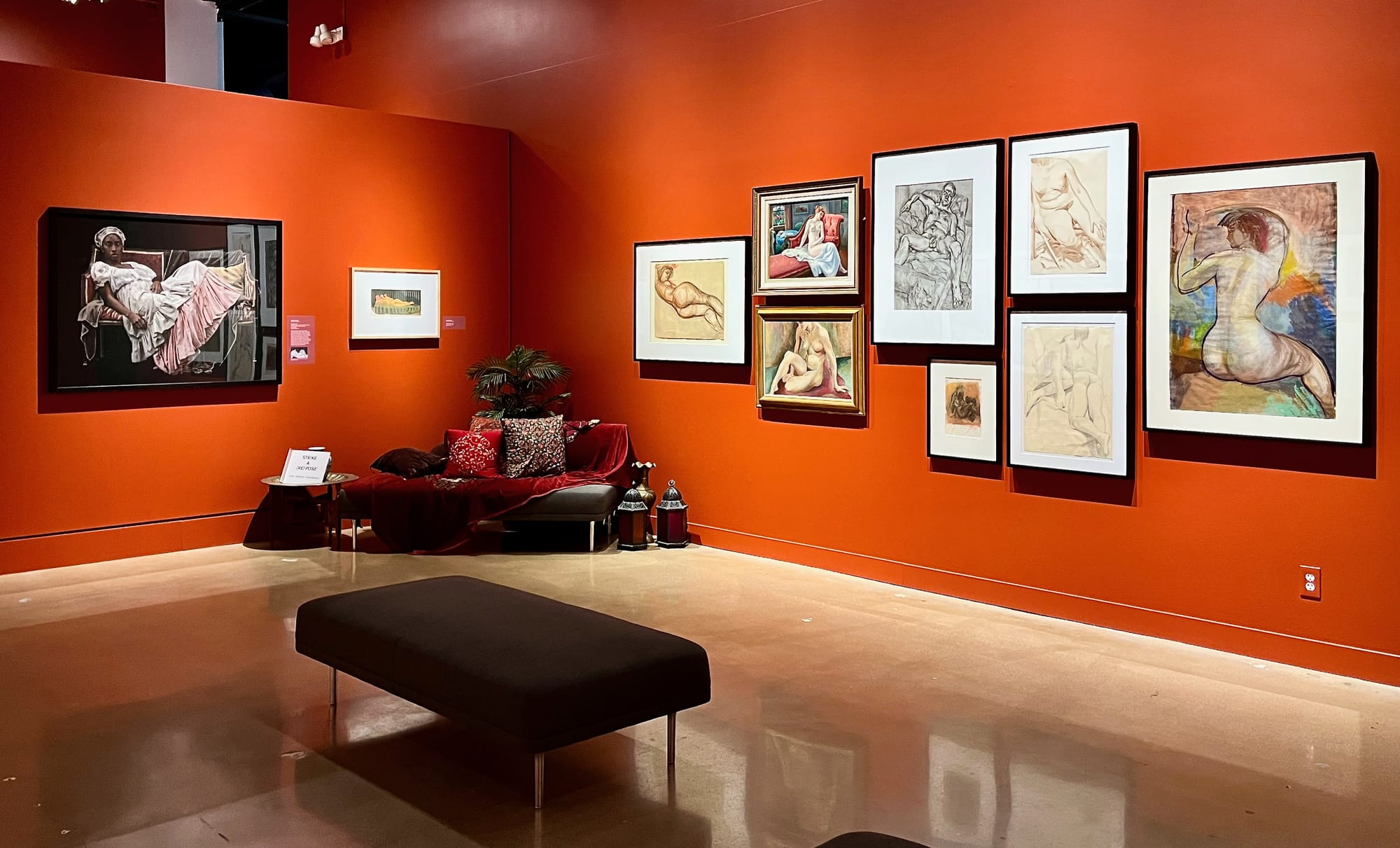
Installation photos of "[Re]Pose," which also includes works by Lalla Essaydi, Barbara Earl Thomas, Dinorá Justice, Zanele Muholi, Robert Peterson, Moses Soyer, Peggy Bacon, Robert Henri, Xavier Gonzalez, Thomas Hart Benton, and Harry Sternberg. A selfie station in one corner offers visitors the opportunity to captures themselves in their own angles of repose.
The Details
"[Re]pose: Leisure Bodies and Empowered Postures"
July 29-December 7, 2024, at the Ulrich Museum of Art on the Wichita State campus, 1845 Fairmount St. in Wichita
Parking: Visitors to the museum may park in one of four labeled parking spots on the east side of the circle in front of the museum. (Let the receptionist know when you enter.)
Language: Museum text for all exhibitions is available in both English and Spanish.
Hours: The museum's regular hours are 11 a.m.-5 p.m. Monday-Saturday.
Free
Other exhibitions at the Ulrich that are also on view through December 7 include "The Ulrich Co-Lab Phase 2" and "Dream Machine: Fantasy, Surreality, and Play."
Learn more about "[Re]Pose" and find campus maps on the Wichita State website.
Krista Vollack is a corporate content creator and creative problem solver by day, an art and music fan 24/7. She lives in Wichita, Kansas.
More visual arts coverage from the SHOUT
 The SHOUTEmily Christensen
The SHOUTEmily Christensen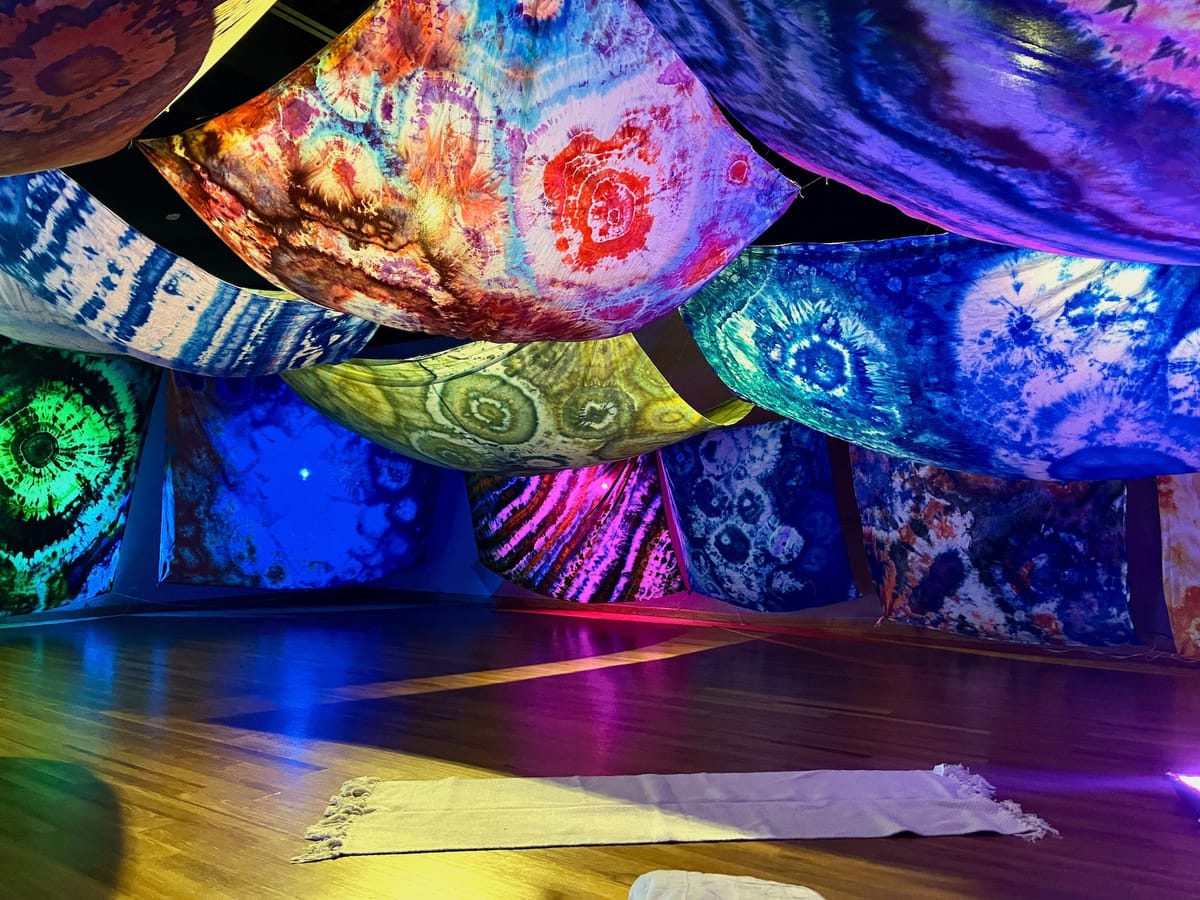
 The SHOUTJeromiah Taylor
The SHOUTJeromiah Taylor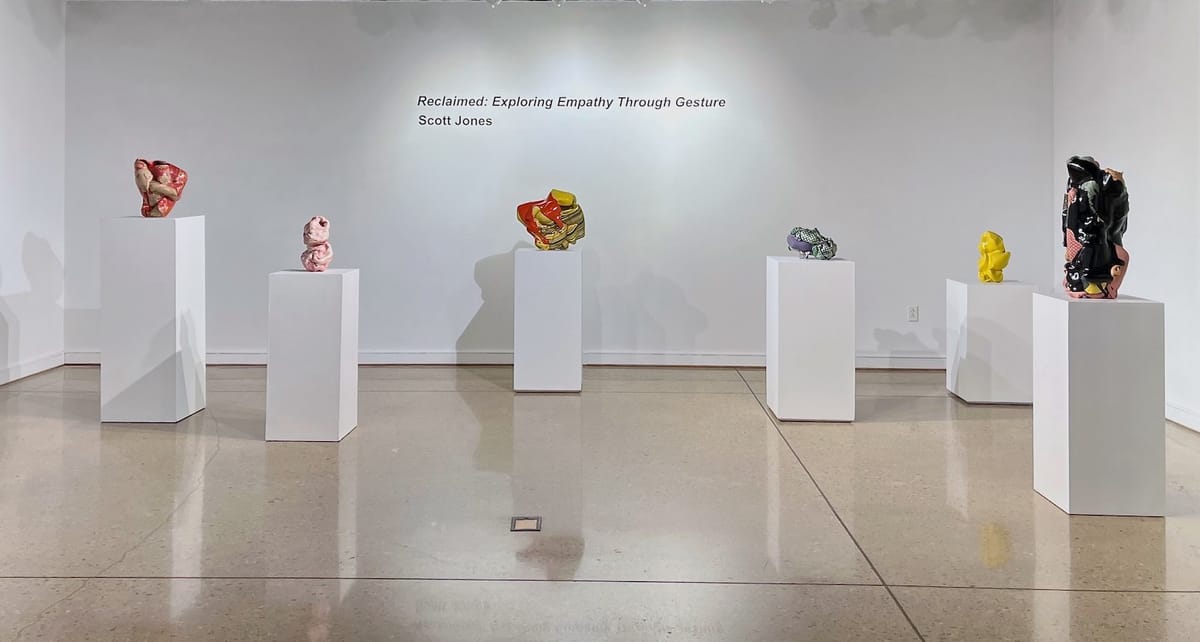
 The SHOUTTeri Mott
The SHOUTTeri Mott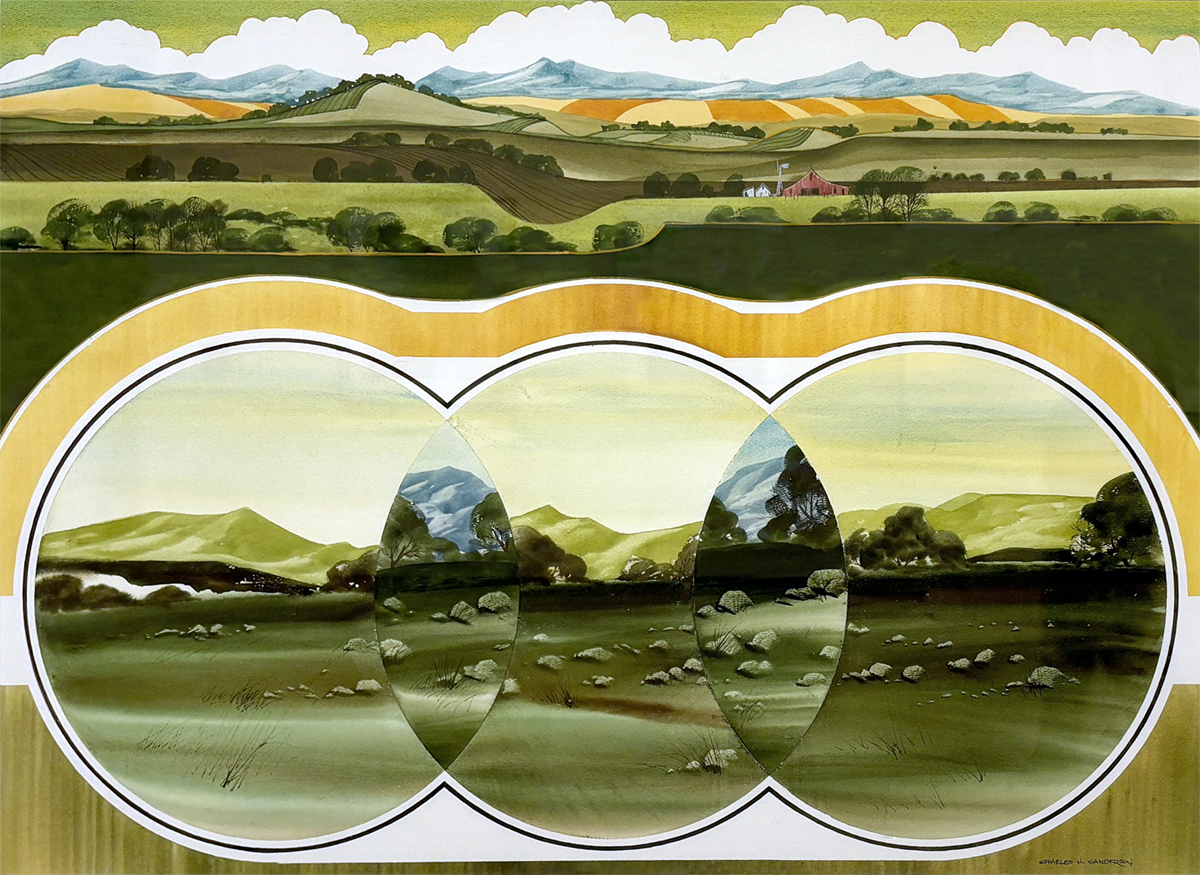
 The SHOUTThe Shout
The SHOUTThe Shout